A mini piggyback
 I'm back to my usual summer pattern of getting into my research while simultaneously disappearing into the mountains for a while. This summer's travels started with a mini "piggyback" - a combo research and field adventure. This time, Sean and I headed to San Diego to give a talk and have some meetings at Scripps Institution of Oceanography. Scripps is filled with bright and energetic people who somehow manage to get work done despite their idyllic setting.
I'm back to my usual summer pattern of getting into my research while simultaneously disappearing into the mountains for a while. This summer's travels started with a mini "piggyback" - a combo research and field adventure. This time, Sean and I headed to San Diego to give a talk and have some meetings at Scripps Institution of Oceanography. Scripps is filled with bright and energetic people who somehow manage to get work done despite their idyllic setting. After a few days of productive discussion, we headed north to the Eastern Sierra. Aiming for some alpine rock routes in the Whitney region, we shouldered packs with a few days of supplies and headed up the North Fork of Lone Pine Creek.
After a few days of productive discussion, we headed north to the Eastern Sierra. Aiming for some alpine rock routes in the Whitney region, we shouldered packs with a few days of supplies and headed up the North Fork of Lone Pine Creek.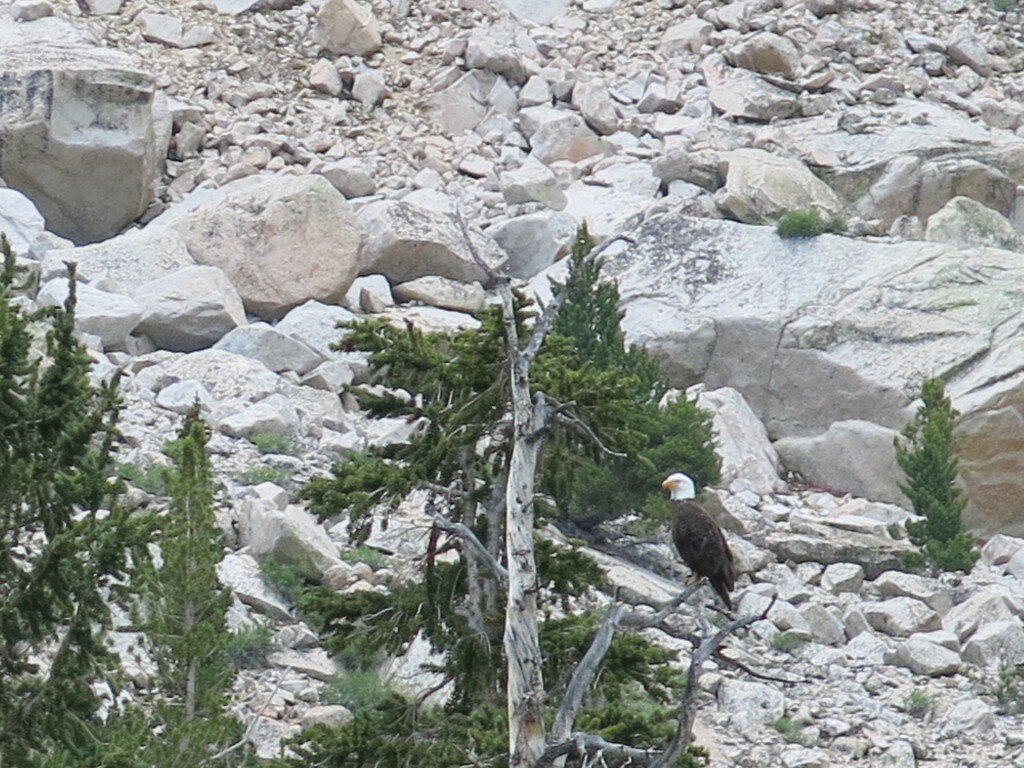
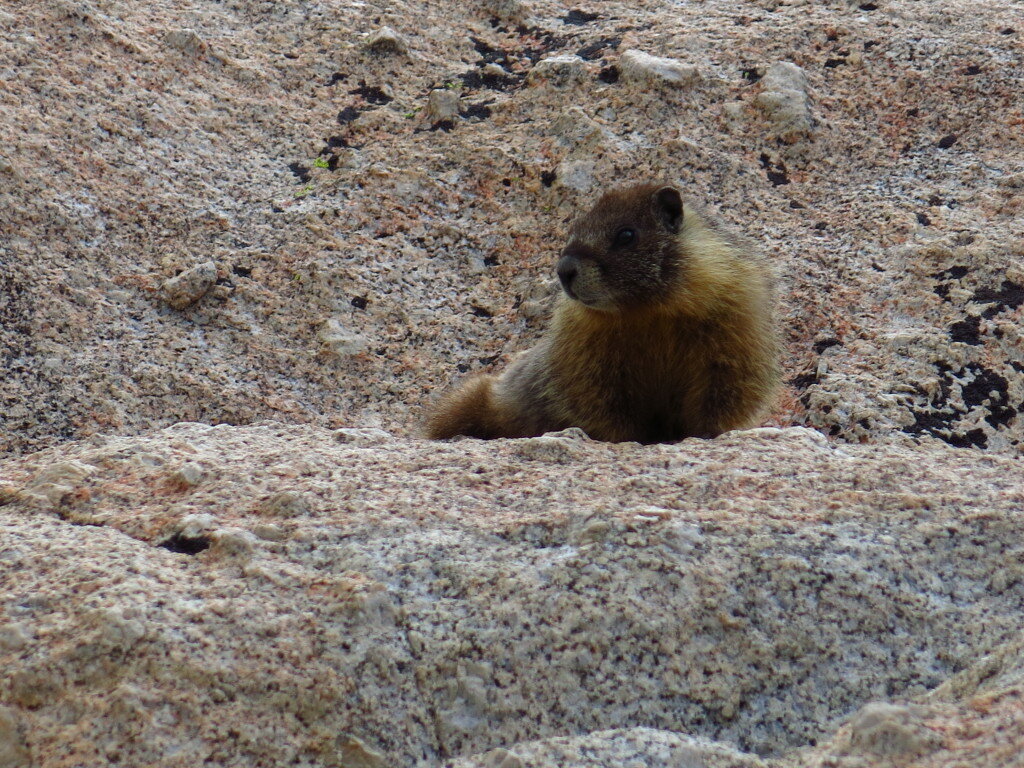
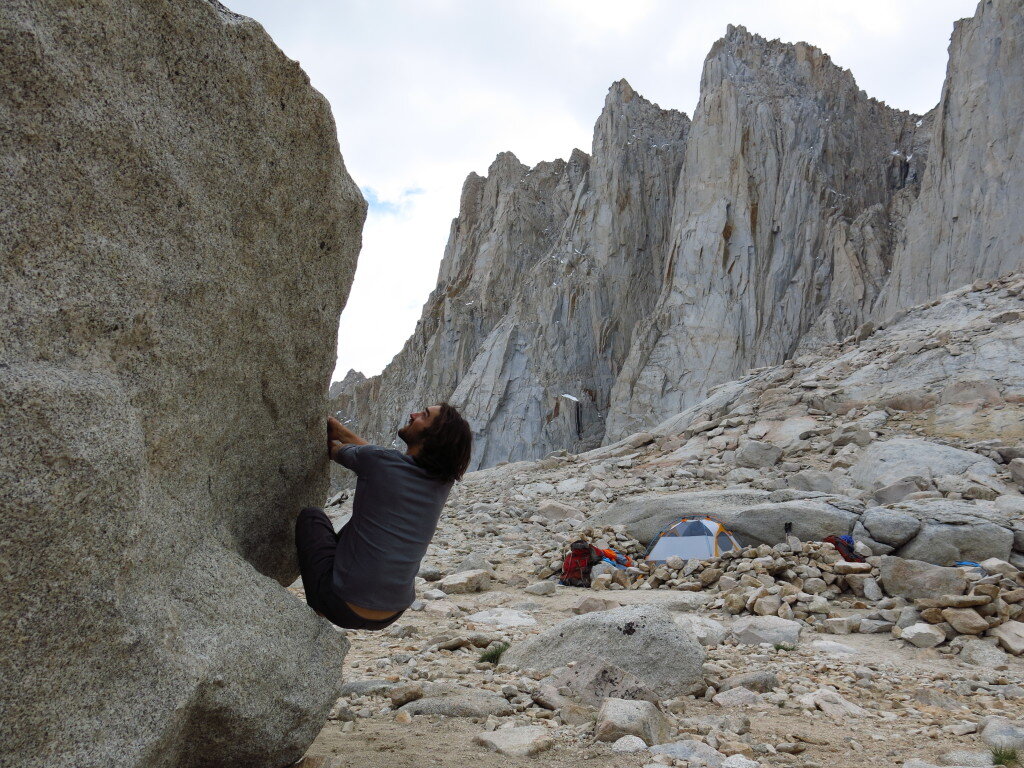
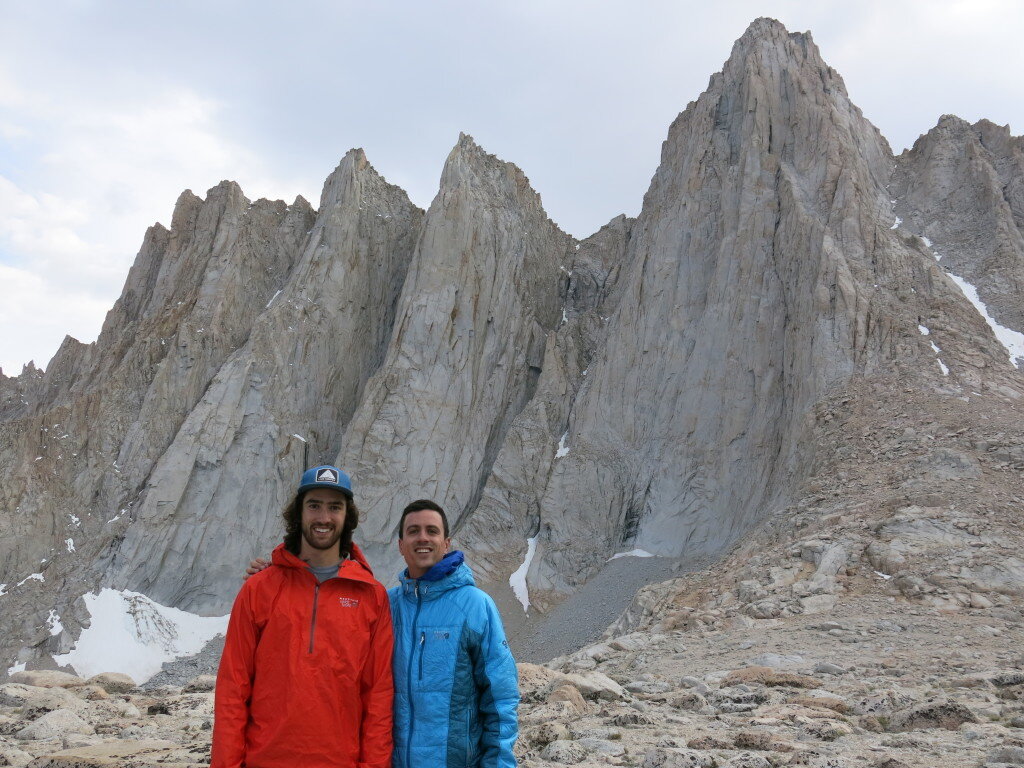
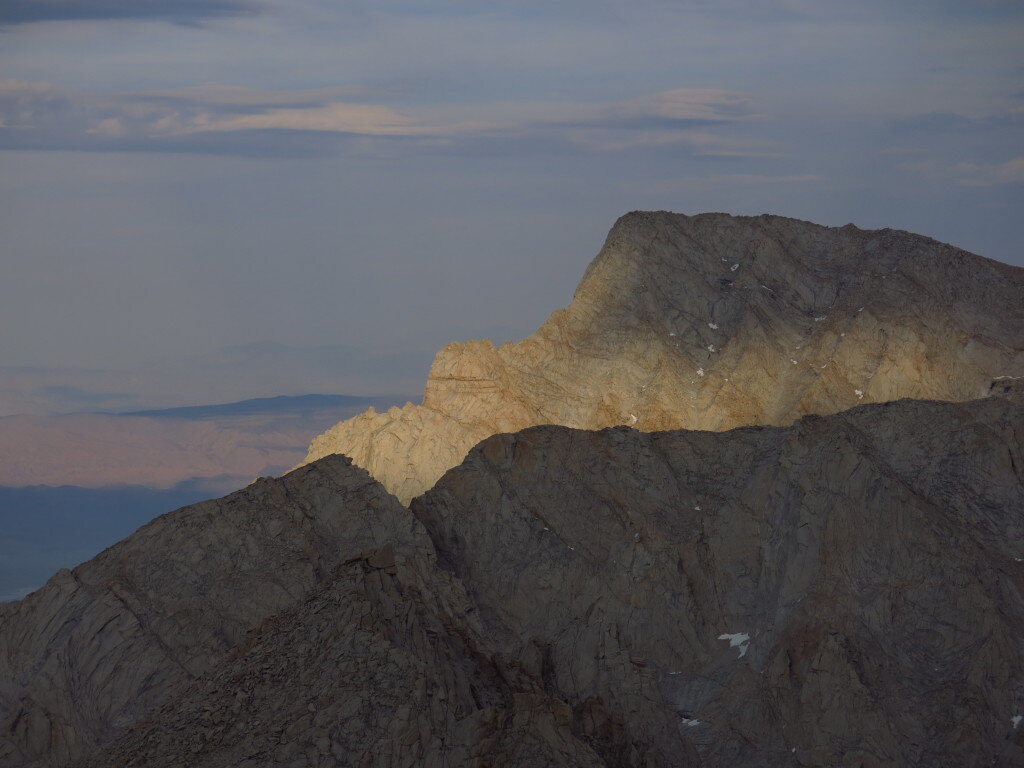
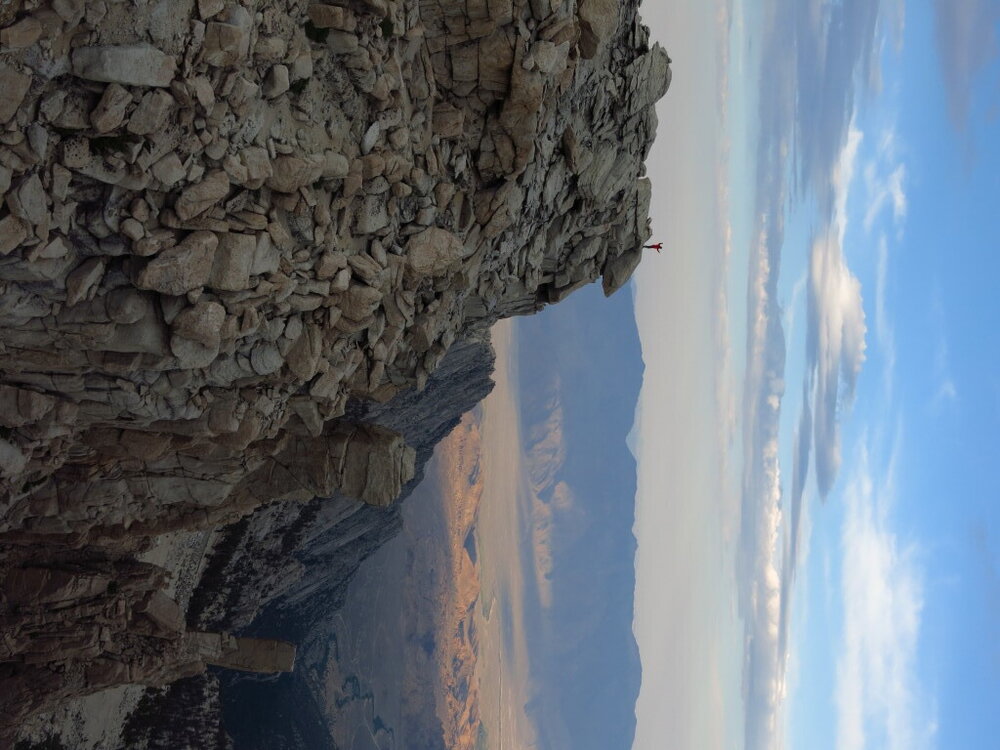 Unfortunately, morning showers and even stronger afternoon thunderstorms prevented us from getting on any of the technical routes, but it was a great trip nonetheless.
Unfortunately, morning showers and even stronger afternoon thunderstorms prevented us from getting on any of the technical routes, but it was a great trip nonetheless.
Chasing Neutrons
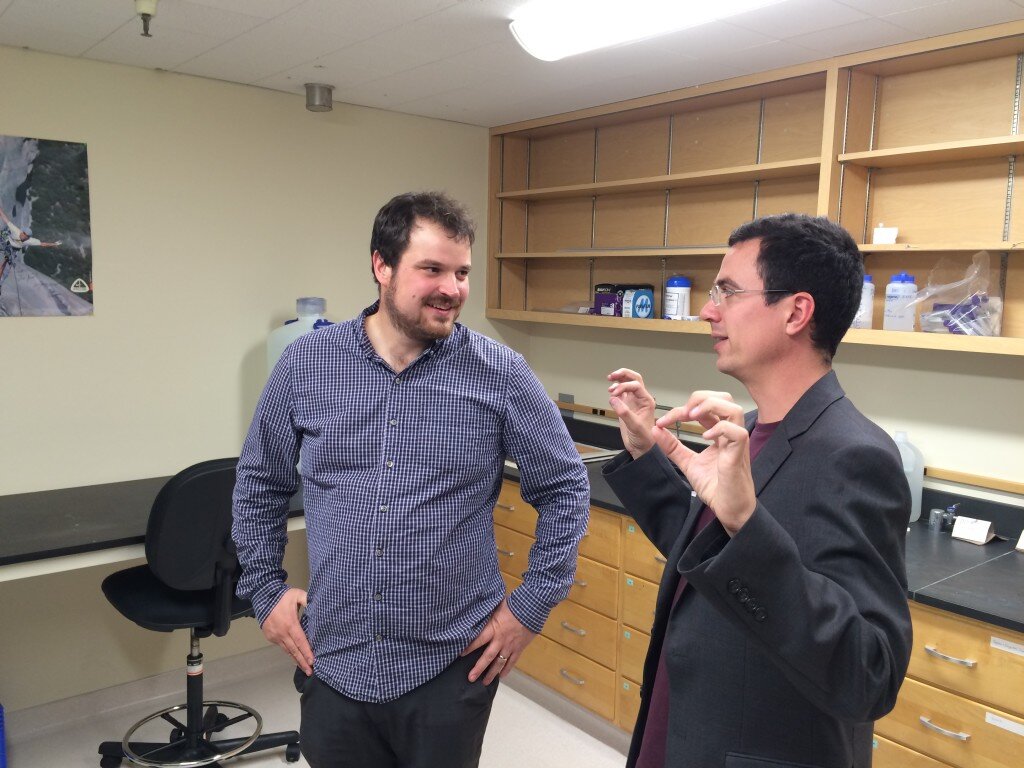 Ask any tenured or tenure-track professor about their first year and you're bound to get a seasoned, almost gleeful look in return. "Just wait a few years, it'll get easier," they'll say, as they recount the desperate sprint of starting out as a faculty member.A few months into my first year, I can officially report that faculty life presents a daunting set of challenges. And I've had it easy: no cross country move, no job search for a spouse, no young children to raise. But while the honeymoon years of infinite intellectual and recreational freedom that defined my graduate career have come and gone (hey, the pictures on this blog didn't take themselves!), I gaze out at the landscape of opportunities ahead.Lately, I've been coming to terms with the contrast between the countless problems I can work on and the startlingly short horizon defining the frontier of my knowledge and skills. Part of what's made the job so all-consuming have been the strategic questions, the big upfront decisions I make that will shape my research trajectory over the coming years. Not to mention figuring out how these "work" decisions will ultimately fit into a happy and fulfilling life. First step, many a scientist's rite of passage, building my own lab...
Ask any tenured or tenure-track professor about their first year and you're bound to get a seasoned, almost gleeful look in return. "Just wait a few years, it'll get easier," they'll say, as they recount the desperate sprint of starting out as a faculty member.A few months into my first year, I can officially report that faculty life presents a daunting set of challenges. And I've had it easy: no cross country move, no job search for a spouse, no young children to raise. But while the honeymoon years of infinite intellectual and recreational freedom that defined my graduate career have come and gone (hey, the pictures on this blog didn't take themselves!), I gaze out at the landscape of opportunities ahead.Lately, I've been coming to terms with the contrast between the countless problems I can work on and the startlingly short horizon defining the frontier of my knowledge and skills. Part of what's made the job so all-consuming have been the strategic questions, the big upfront decisions I make that will shape my research trajectory over the coming years. Not to mention figuring out how these "work" decisions will ultimately fit into a happy and fulfilling life. First step, many a scientist's rite of passage, building my own lab...
 I'm also continuing to refine the "piggyback," where a work trip incorporates a bit of play. Case in point, spring break was spent with my student researcher Sean, who just happens to be a superb rock climber (wink). Read more of Sean's exploits here. So we dropped by Yosemite valley for a couple days on the way out to fieldwork in the Eastern Sierra near Reno. I gladly gave Sean all the runout pitches on valley classics including Snake Dike, the legendary line on Half Dome. Hiking out, I noticed a scratchy throat and proceeded to get violently sick for the rest of break and the next couple weeks, but all in all, it was a very successful trip sampling and otherwise.
I'm also continuing to refine the "piggyback," where a work trip incorporates a bit of play. Case in point, spring break was spent with my student researcher Sean, who just happens to be a superb rock climber (wink). Read more of Sean's exploits here. So we dropped by Yosemite valley for a couple days on the way out to fieldwork in the Eastern Sierra near Reno. I gladly gave Sean all the runout pitches on valley classics including Snake Dike, the legendary line on Half Dome. Hiking out, I noticed a scratchy throat and proceeded to get violently sick for the rest of break and the next couple weeks, but all in all, it was a very successful trip sampling and otherwise.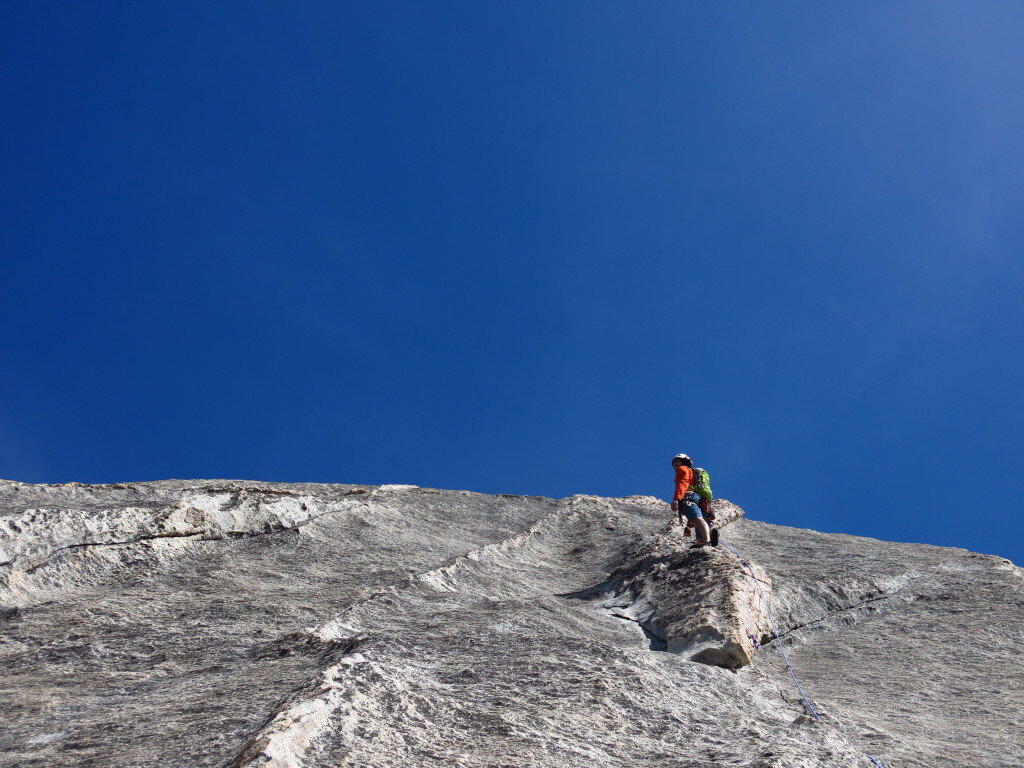
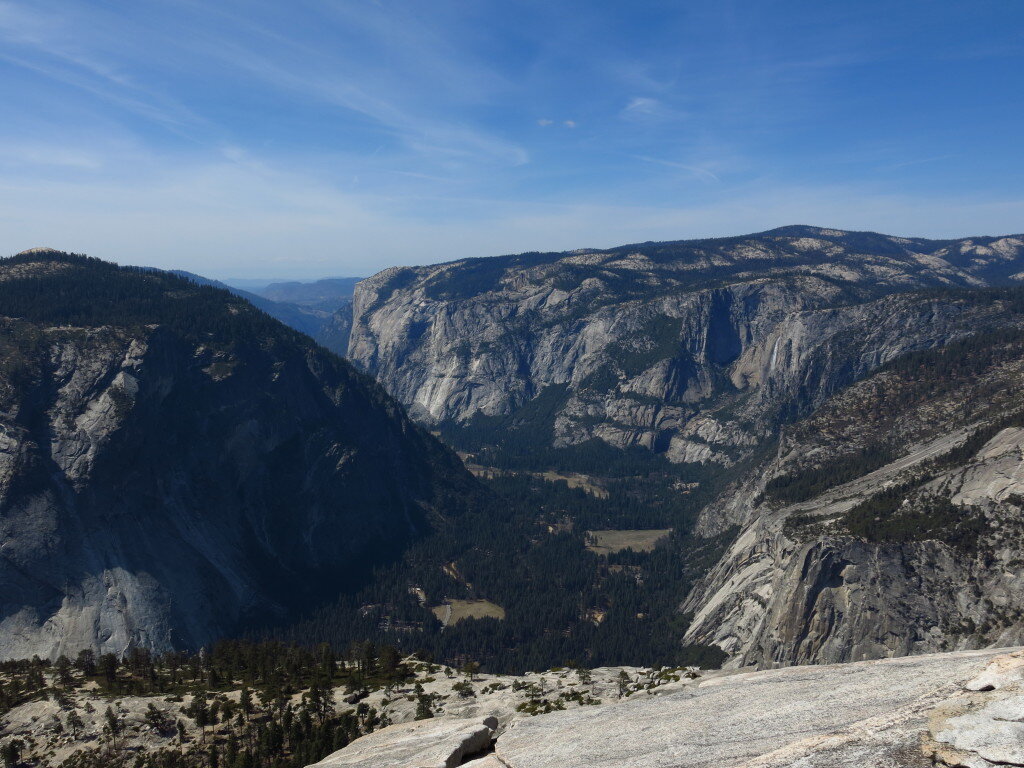
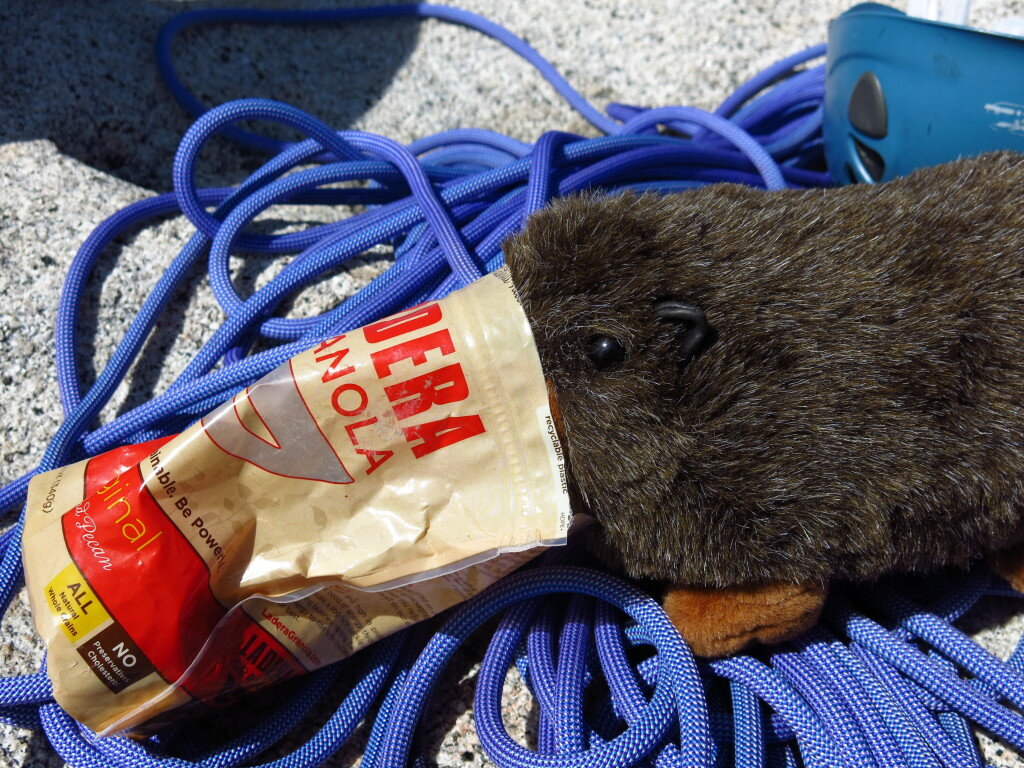
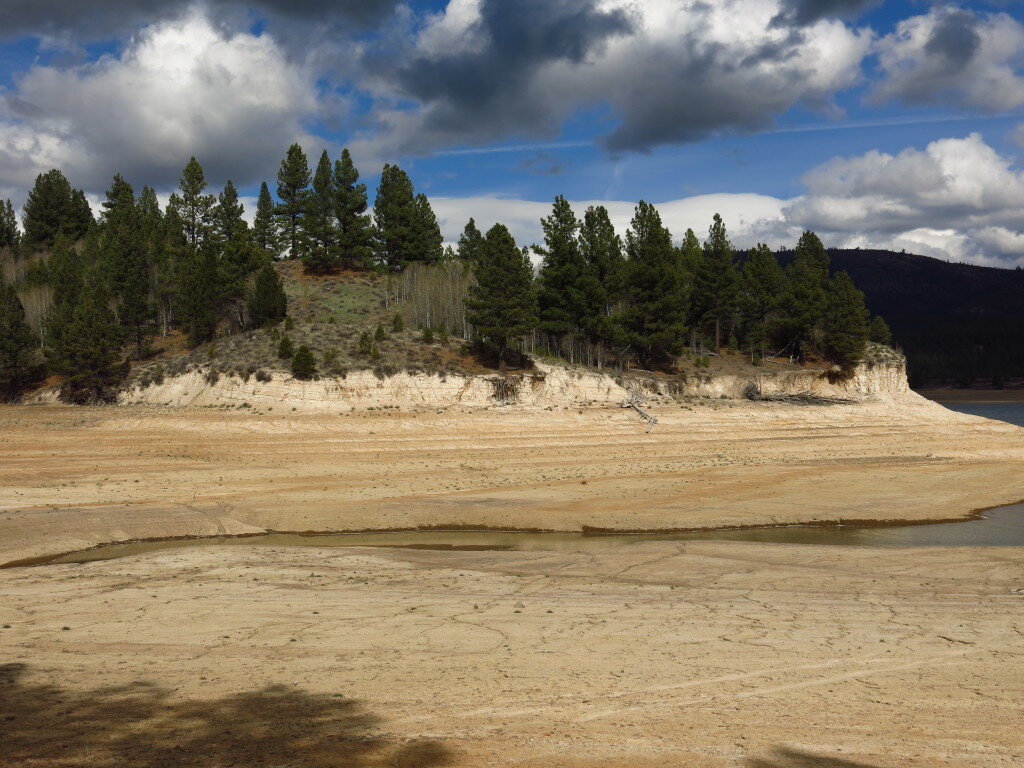
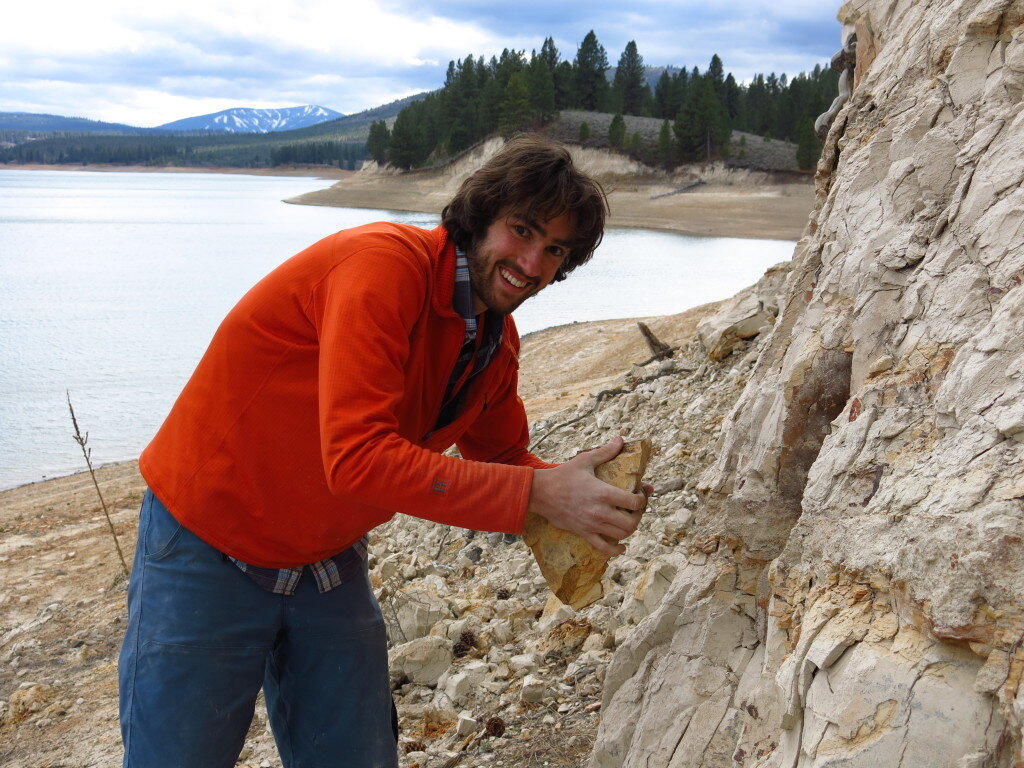
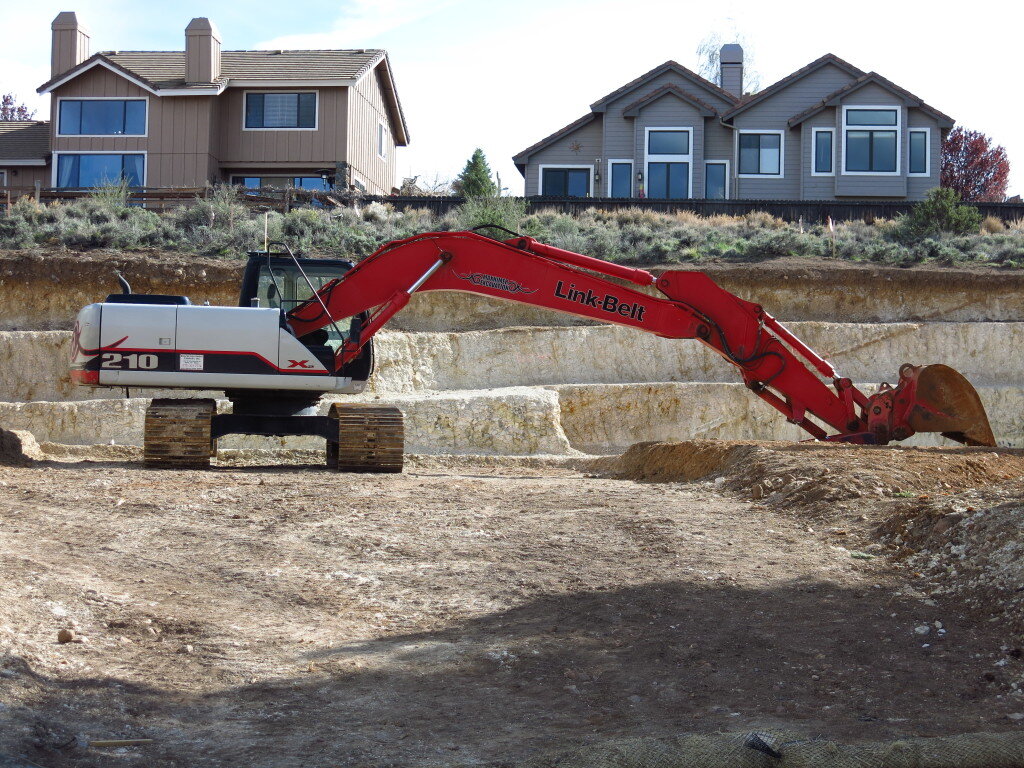 Oh, and I'll get back up in the big mountains too...I'm just shaking out before the crux!P.S. Thanks to everyone who's reached out to me with regards to the Nepal earthquake. Lots of friends over there have been affected, but luckily a lot of the news I'm getting from the ground now is better than I'd feared. Still many are in need. For those who've been asking, I've been recommending the American Himalayan Foundation as a great organization on the ground that's currently directing 100% of donations to relief and long term recovery in Nepal.P.P.S. A few years ago, I came across a couple mountain guides from Oregon who snapped these awesome shots of me in action on Bugaboo Spire in BC. Somehow my email address was temporarily lost, but look what came in the mail!
Oh, and I'll get back up in the big mountains too...I'm just shaking out before the crux!P.S. Thanks to everyone who's reached out to me with regards to the Nepal earthquake. Lots of friends over there have been affected, but luckily a lot of the news I'm getting from the ground now is better than I'd feared. Still many are in need. For those who've been asking, I've been recommending the American Himalayan Foundation as a great organization on the ground that's currently directing 100% of donations to relief and long term recovery in Nepal.P.P.S. A few years ago, I came across a couple mountain guides from Oregon who snapped these awesome shots of me in action on Bugaboo Spire in BC. Somehow my email address was temporarily lost, but look what came in the mail!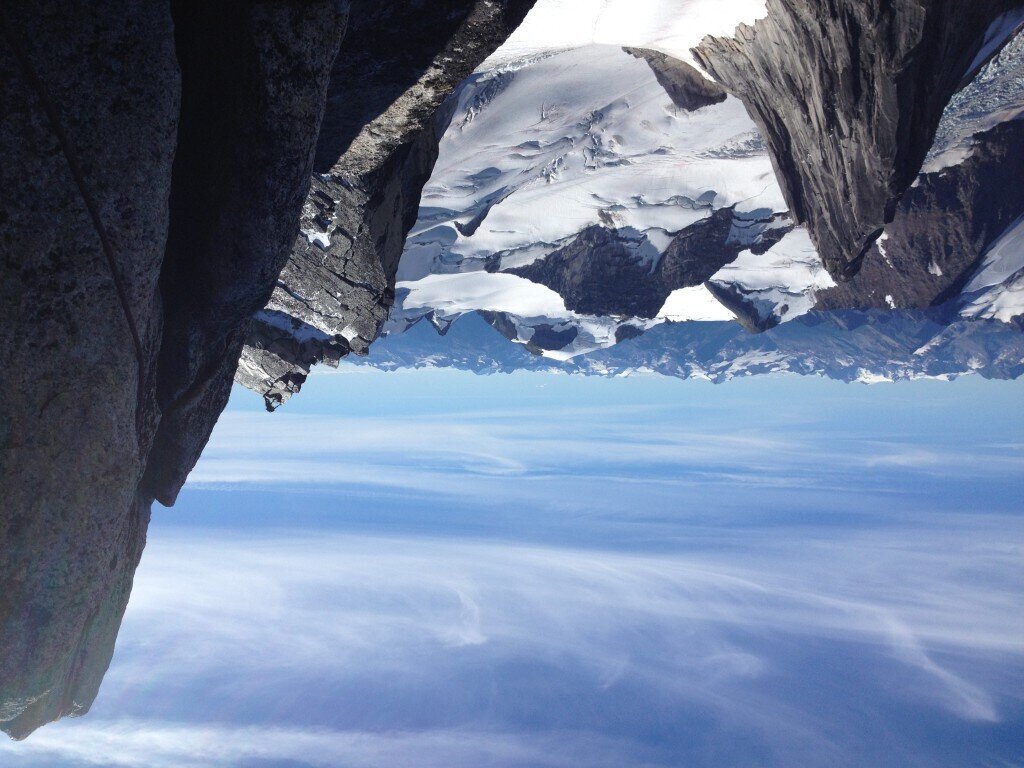
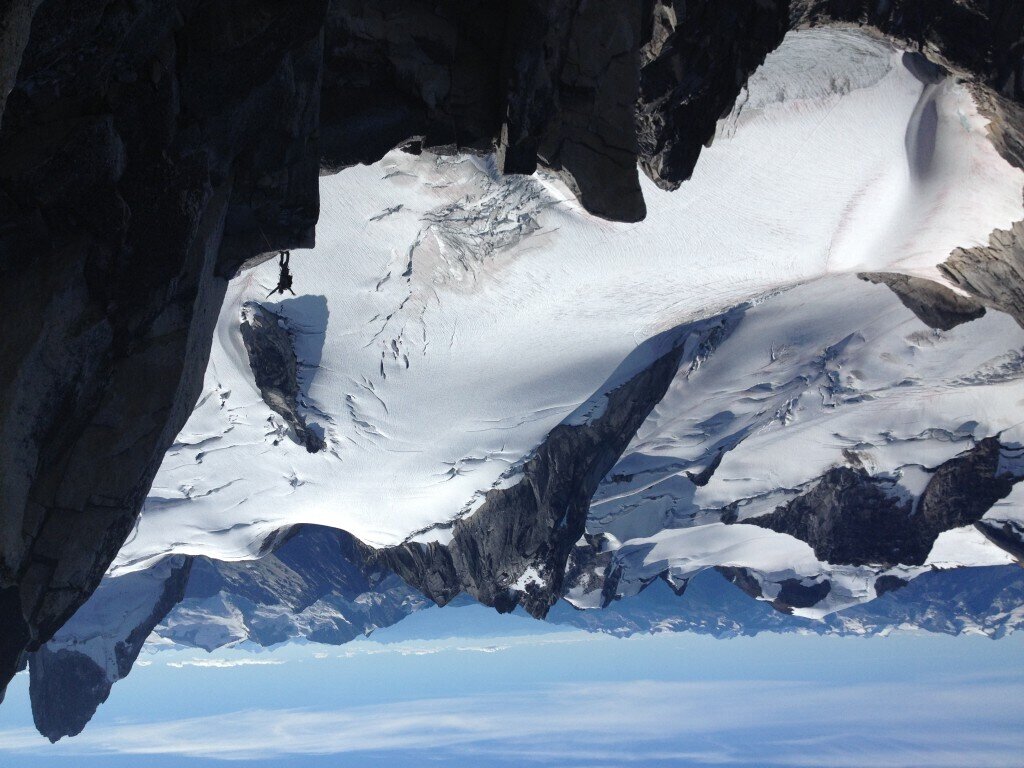
What can clay tell us about the past?
How hot was it in Colorado yesterday? Ok, how about 20 million years ago? Hmm, that one seems trickier to answer. I recently took a stab at this and other questions in North American paleoclimate in the final chapter of my PhD, which has been accepted in Geochimica et Cosmochimica Acta, a leading geochemistry journal. I've been somewhat reluctant to write about this as it's not exactly the most accessible work I've done, plus I've been trying to run away from the last remaining scraps of my PhD in search of fresh research topics!Anyhow, here's a go at some of what I've been working on since 2008. Telling the conditions in the geologic past has always been challenging, but our foundation of knowledge has always been observational science. For many decades, paleontologists have studied fossils to determine information about ancient climate and environments. One metric involves analyzing the shapes of leaves, then using statistical models to determine things such as ancient temperature and rainfall.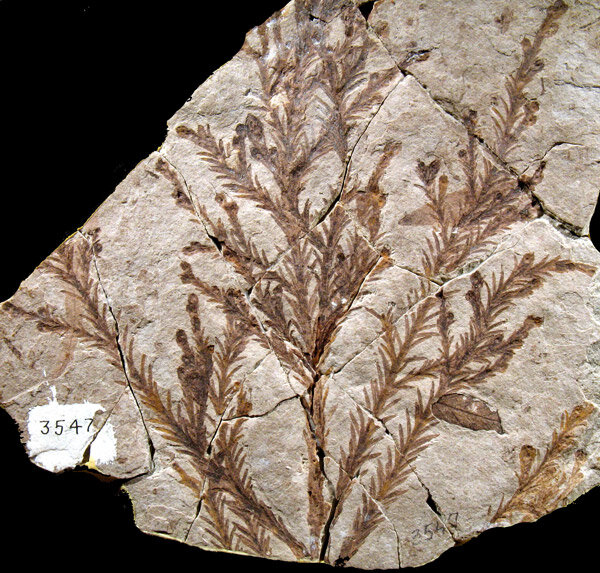 I belong to a community of scientists who use the chemistry of ancient sediments to learn about the past. Harold Urey's discovery of deuterium (hydrogen with an extra neutron) not only won him the Nobel Prize in 1934, but also gave birth to an entire field of stable isotope paleoclimatology. As it turns out, many natural processes preferentially take one isotope (forms of an element with different masses) over another in what is known as isotopic fractionation. For example, photosynthesis preferentially uses "light" carbon-12 in CO₂ over the heavier carbon-13. One of the best things from a climate standpoint, though, is that most isotopic fractionation is temperature dependent, meaning that we can calculate temperature if we know some more things about the system. Most famously, our best records of climate change over geologic timescales come from ancient fossils of tiny foraminifera buried in ocean sediments. The chemistry of their shells, made out of calcium carbonate, tells us about the temperature and amount of ice on the ancient earth.Here's where the clay comes in...clay minerals form as weathering products in soils. The clay forms in equilibrium with ancient water, and preserves the ancient isotopic signatures of oxygen and hydrogen, allowing us to study the ancient climate. I've been using the peculiar chemistry of smectite, a particular type of clay that weathered out of volcanic ash from enormous eruptions to tell the temperature history of western North America.
I belong to a community of scientists who use the chemistry of ancient sediments to learn about the past. Harold Urey's discovery of deuterium (hydrogen with an extra neutron) not only won him the Nobel Prize in 1934, but also gave birth to an entire field of stable isotope paleoclimatology. As it turns out, many natural processes preferentially take one isotope (forms of an element with different masses) over another in what is known as isotopic fractionation. For example, photosynthesis preferentially uses "light" carbon-12 in CO₂ over the heavier carbon-13. One of the best things from a climate standpoint, though, is that most isotopic fractionation is temperature dependent, meaning that we can calculate temperature if we know some more things about the system. Most famously, our best records of climate change over geologic timescales come from ancient fossils of tiny foraminifera buried in ocean sediments. The chemistry of their shells, made out of calcium carbonate, tells us about the temperature and amount of ice on the ancient earth.Here's where the clay comes in...clay minerals form as weathering products in soils. The clay forms in equilibrium with ancient water, and preserves the ancient isotopic signatures of oxygen and hydrogen, allowing us to study the ancient climate. I've been using the peculiar chemistry of smectite, a particular type of clay that weathered out of volcanic ash from enormous eruptions to tell the temperature history of western North America. My study involved collected hundreds of samples of weathered ash from all over western North America, with ages ranging from 620,000 years to about 30 million years. I separated the clay minerals using a centrifuge (read: lots of dishwashing!) and analyzed the oxygen and hydrogen isotope composition using mass spectrometry.
My study involved collected hundreds of samples of weathered ash from all over western North America, with ages ranging from 620,000 years to about 30 million years. I separated the clay minerals using a centrifuge (read: lots of dishwashing!) and analyzed the oxygen and hydrogen isotope composition using mass spectrometry. What do our results say? Well, quite a few things, but temperatures in North America follow global prevailing trends. It was quite a lot warmer (~10-15 degrees C) around 15 million years ago at a time known as the Middle Miocene Climatic Optimum. This was the most recent time of elevated global temperatures similar to where we may be headed by 2100 with modern climate change. If my results are any indication, continental interiors may warm to a greater degree than global averages.
What do our results say? Well, quite a few things, but temperatures in North America follow global prevailing trends. It was quite a lot warmer (~10-15 degrees C) around 15 million years ago at a time known as the Middle Miocene Climatic Optimum. This was the most recent time of elevated global temperatures similar to where we may be headed by 2100 with modern climate change. If my results are any indication, continental interiors may warm to a greater degree than global averages.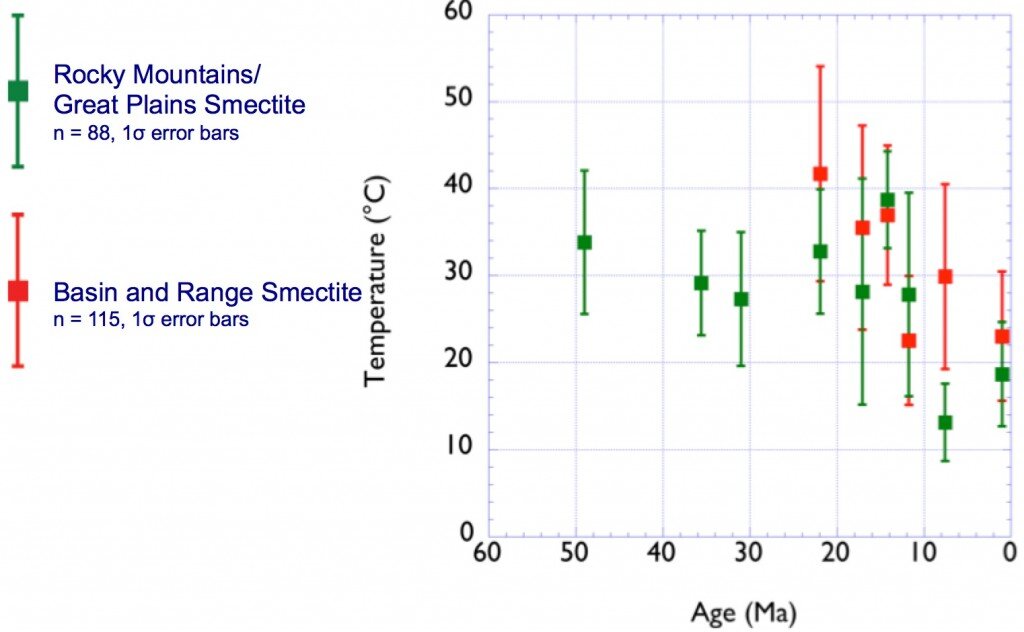
Rising mountains dried out Central Asia
 Something has come of those two summers spent bouncing around Mongolia in Russian vans! Work led by my fellow grad student and travel companion Jeremy Caves has been presented, submitted for publication, and picked up by a few science news aggregators. This piece, written by Stanford's earth science writer Ker Than, puts some of our findings into English...-----------------------------------------------------------------------------------------------------------------------------Rising mountains dried out Central AsiaA record of ancient rainfall teased from long-buried sediments in Mongolia is challenging the popular idea that the arid conditions prevalent in Central Asia today were caused by the ancient uplift of the Himalayas and the Tibetan Plateau.Instead, Stanford scientists say the formation of two lesser mountain ranges, the Hangay and the Altai, may have been the dominant drivers of climate in the region, leading to the expansion of Asia's largest desert, the Gobi. The findings will be presented on Thursday, Dec. 12, at the annual meeting of the American Geophysical Union (AGU) in San Francisco."These results have major implications for understanding the dominant factors behind modern-day Central Asia's extremely arid climate and the role of mountain ranges in altering regional climate," said Page Chamberlain, a professor of environmental Earth system science at Stanford.
Something has come of those two summers spent bouncing around Mongolia in Russian vans! Work led by my fellow grad student and travel companion Jeremy Caves has been presented, submitted for publication, and picked up by a few science news aggregators. This piece, written by Stanford's earth science writer Ker Than, puts some of our findings into English...-----------------------------------------------------------------------------------------------------------------------------Rising mountains dried out Central AsiaA record of ancient rainfall teased from long-buried sediments in Mongolia is challenging the popular idea that the arid conditions prevalent in Central Asia today were caused by the ancient uplift of the Himalayas and the Tibetan Plateau.Instead, Stanford scientists say the formation of two lesser mountain ranges, the Hangay and the Altai, may have been the dominant drivers of climate in the region, leading to the expansion of Asia's largest desert, the Gobi. The findings will be presented on Thursday, Dec. 12, at the annual meeting of the American Geophysical Union (AGU) in San Francisco."These results have major implications for understanding the dominant factors behind modern-day Central Asia's extremely arid climate and the role of mountain ranges in altering regional climate," said Page Chamberlain, a professor of environmental Earth system science at Stanford. Scientists previously thought that the formation of the Himalayan mountain range and the Tibetan plateau around 45 million years ago shaped Asia's driest environments."The traditional explanation has been that the uplift of the Himalayas blocked air from the Indian Ocean from reaching central Asia," said Jeremy Caves, a doctoral student in Chamberlain's terrestrial paleoclimate research group who was involved in the study.
Scientists previously thought that the formation of the Himalayan mountain range and the Tibetan plateau around 45 million years ago shaped Asia's driest environments."The traditional explanation has been that the uplift of the Himalayas blocked air from the Indian Ocean from reaching central Asia," said Jeremy Caves, a doctoral student in Chamberlain's terrestrial paleoclimate research group who was involved in the study. This process was thought to have created a distinct rain shadow that led to wetter climates in India and Nepal and drier climates in Central Asia. Similarly, the elevation of the Tibetan Plateau was thought to have triggered an atmospheric process called subsidence, in which a mass of air heated by a high elevation slowly sinks into Central Asia."The falling air suppresses convective systems such as thunderstorms, and the result is you get really dry environments," Caves said.This long-accepted model of how Central Asia's arid environments were created mostly ignores, however, the existence of the Altai and Hangay, two northern mountain ranges.Searching for answersTo investigate the effects of the smaller ranges on the regional climate, Caves and his colleagues from Stanford and Rocky Mountain College in Montana traveled to Mongolia in 2011 and 2012 and collected samples of ancient soil, as well as stream and lake sediments from remote sites in the central, southwestern and western parts of the country.The team carefully chose its sites by scouring the scientific literature for studies of the region conducted by pioneering researchers in past decades."A lot of the papers were by Polish and Russian scientists who went there to look for dinosaur fossils," said Hari Mix, a doctoral student at Stanford who also participated in the research. "Indeed, at many of the sites we visited, there were dinosaur fossils just lying around."The earlier researchers recorded the ages and locations of the rocks they excavated as part of their own investigations; Caves and his team used those age estimates to select the most promising sites for their own study.At each site, the team bagged sediment samples that were later analyzed to determine their carbon isotope content. The relative level of carbon isotopes present in a soil sample is related to the productivity of plants growing in the soil, which is itself dependent on the annual rainfall. Thus, by measuring carbon isotope amounts from different sediment samples of different ages, the team was able to reconstruct past precipitation levels.An ancient wet periodThe new data suggest that rainfall in central and southwestern Mongolia had decreased by 50 to 90 percent in the last several tens of million of years."Right now, precipitation in Mongolia is about 5 inches annually," Caves said. "To explain our data, rainfall had to decrease from 10 inches a year or more to its current value over the last 10 to 30 million years."That means that much of Mongolia and Central Asia were still relatively wet even after the formation of the Himalayas and the Tibetan Plateau 45 million years ago. The data show that it wasn't until about 30 million years ago, when the Hangay Mountains first formed, that rainfall started to decrease. The region began drying out even faster about 5 million to 10 million years ago, when the Altai Mountains began to rise.The scientists hypothesize that once they formed, the Hangay and Altai ranges created rain shadows of their own that blocked moisture from entering Central Asia."As a result, the northern and western sides of these ranges are wet, while the southern and eastern sides are dry," Caves said.The team is not discounting the effect of the Himalayas and the Tibetan Plateau entirely, because portions of the Gobi Desert likely already existed before the Hangay or Altai began forming."What these smaller mountains did was expand the Gobi north and west into Mongolia," Caves said.The uplift of the Hangay and Altai may have had other, more far-reaching implications as well, Caves said. For example, westerly winds in Asia slam up against the Altai today, creating strong cyclonic winds in the process. Under the right conditions, the cyclones pick up large amounts of dust as they snake across the Gobi Desert. That dust can be lofted across the Pacific Ocean and even reach California, where it serves as microscopic seeds for developing raindrops.The origins of these cyclonic winds, as well as substantial dust storms in China today, may correlate with uplift of the Altai, Caves said. His team plans to return to Mongolia and Kazakhstan next summer to collect more samples and to use climate models to test whether the Altai are responsible for the start of the large dust storms."If the Altai are a key part of regulating Central Asia's climate, we can go and look for evidence of it in the past," Caves said.
This process was thought to have created a distinct rain shadow that led to wetter climates in India and Nepal and drier climates in Central Asia. Similarly, the elevation of the Tibetan Plateau was thought to have triggered an atmospheric process called subsidence, in which a mass of air heated by a high elevation slowly sinks into Central Asia."The falling air suppresses convective systems such as thunderstorms, and the result is you get really dry environments," Caves said.This long-accepted model of how Central Asia's arid environments were created mostly ignores, however, the existence of the Altai and Hangay, two northern mountain ranges.Searching for answersTo investigate the effects of the smaller ranges on the regional climate, Caves and his colleagues from Stanford and Rocky Mountain College in Montana traveled to Mongolia in 2011 and 2012 and collected samples of ancient soil, as well as stream and lake sediments from remote sites in the central, southwestern and western parts of the country.The team carefully chose its sites by scouring the scientific literature for studies of the region conducted by pioneering researchers in past decades."A lot of the papers were by Polish and Russian scientists who went there to look for dinosaur fossils," said Hari Mix, a doctoral student at Stanford who also participated in the research. "Indeed, at many of the sites we visited, there were dinosaur fossils just lying around."The earlier researchers recorded the ages and locations of the rocks they excavated as part of their own investigations; Caves and his team used those age estimates to select the most promising sites for their own study.At each site, the team bagged sediment samples that were later analyzed to determine their carbon isotope content. The relative level of carbon isotopes present in a soil sample is related to the productivity of plants growing in the soil, which is itself dependent on the annual rainfall. Thus, by measuring carbon isotope amounts from different sediment samples of different ages, the team was able to reconstruct past precipitation levels.An ancient wet periodThe new data suggest that rainfall in central and southwestern Mongolia had decreased by 50 to 90 percent in the last several tens of million of years."Right now, precipitation in Mongolia is about 5 inches annually," Caves said. "To explain our data, rainfall had to decrease from 10 inches a year or more to its current value over the last 10 to 30 million years."That means that much of Mongolia and Central Asia were still relatively wet even after the formation of the Himalayas and the Tibetan Plateau 45 million years ago. The data show that it wasn't until about 30 million years ago, when the Hangay Mountains first formed, that rainfall started to decrease. The region began drying out even faster about 5 million to 10 million years ago, when the Altai Mountains began to rise.The scientists hypothesize that once they formed, the Hangay and Altai ranges created rain shadows of their own that blocked moisture from entering Central Asia."As a result, the northern and western sides of these ranges are wet, while the southern and eastern sides are dry," Caves said.The team is not discounting the effect of the Himalayas and the Tibetan Plateau entirely, because portions of the Gobi Desert likely already existed before the Hangay or Altai began forming."What these smaller mountains did was expand the Gobi north and west into Mongolia," Caves said.The uplift of the Hangay and Altai may have had other, more far-reaching implications as well, Caves said. For example, westerly winds in Asia slam up against the Altai today, creating strong cyclonic winds in the process. Under the right conditions, the cyclones pick up large amounts of dust as they snake across the Gobi Desert. That dust can be lofted across the Pacific Ocean and even reach California, where it serves as microscopic seeds for developing raindrops.The origins of these cyclonic winds, as well as substantial dust storms in China today, may correlate with uplift of the Altai, Caves said. His team plans to return to Mongolia and Kazakhstan next summer to collect more samples and to use climate models to test whether the Altai are responsible for the start of the large dust storms."If the Altai are a key part of regulating Central Asia's climate, we can go and look for evidence of it in the past," Caves said.
Did Grassland Expansion affect North American Climate?
A major component of my graduate work is out in this month's Earth and Planetary Science Letters. Here's an attempt to translate some of what I think about into English...bear with me because I simply can't spend the time to cover enough background material. Some of these are actual figures so sorry for the compexity. The first chapter of my graduate work involved compiling and analyzing all of the existing records of climate change in western North America. Our research was motivated by the need to understand the topographic evolution of the Rocky Mountains and their effects on climate. My research group, along with several dozen other groups around the world, collects records of ancient climate using the chemistry of sedimentary rocks. By analyzing the ratios of isotopes of oxygen and hydrogen in particular minerals such as calcium carbonate, mica, clays, hydrated volcanic glass, and even fossil mammal teeth, we can decipher the climatic conditions of the past.
The first chapter of my graduate work involved compiling and analyzing all of the existing records of climate change in western North America. Our research was motivated by the need to understand the topographic evolution of the Rocky Mountains and their effects on climate. My research group, along with several dozen other groups around the world, collects records of ancient climate using the chemistry of sedimentary rocks. By analyzing the ratios of isotopes of oxygen and hydrogen in particular minerals such as calcium carbonate, mica, clays, hydrated volcanic glass, and even fossil mammal teeth, we can decipher the climatic conditions of the past. 
One of the things we noticed during this work was a variety of explanations for stable isotope paleoclimate records in the last 20 or so million years. Nearly all of the records, except those in the rainshadow of the Cascade Mountains, increase in the amount of oxygen-18 in ancient precipitation. Over the last several years, I've worked on solving a set of questions exploring the possible contributions of grasslands to this climate change.

Despite the 3.7 billion year history of plants on Earth, the development of grasslands happened quite recently in the geological past, with grass-dominated landscapes appearing in North America over the last 25 or so million years. Grasslands rapidly expanded to their current extent (roughly 30% of Earth's land surface) mostly in the last 15 million years, coincident with global cooling, aridification and an increasingly seasonal climate. We figured that an ecological transition this large must have been accompanied by corresponding changes in climate. Plants recycle water through evapotranspiration...they all take in water from their roots and lose water through their leaves during photosynthesis. This effect is so great, some regions can practically create their own rainfall. Though grasses transpire less water than forests, they recycle more relative to the amount of precipitation in their region.
To test the idea that the rise of grass-dominated landscapes could have dramatically changed North American climate, we built a model to gain a mechanistic understanding of how different vegetation types would recycle water and affect climate downstream. In short, our findings were that grasslands indeed could have produced some of the most profound changes in climate and ushered in the modern climatic regime.

On the road (again)...and Generation Anthropocene Interview
 Greetings from British Columbia! I've been out doing fieldwork with my research group. We're all collecting samples that will help constrain the climate in western North America during the particularly hot and humid Eocene (33-55 million years ago). We're visiting some of the most amazing plant fossil sites on the continent and collecting samples for our isotopic work. The fishing is amazing, both for us and the bald eagles. Bugs aren't (so) bad.A few weeks ago, I sat down with Generation Anthropocene, a podcast started by fellow Stanford students Michael Osborne, Miles Traer and Leslie Chang that confronts the reality that we, humans, are a force driving global-scale change. In the first ever two-part GenAnthro conversation, Miles, Leslie and I discuss mountains, science and beyond in a somewhat biographical piece:Part OnePart Two
Greetings from British Columbia! I've been out doing fieldwork with my research group. We're all collecting samples that will help constrain the climate in western North America during the particularly hot and humid Eocene (33-55 million years ago). We're visiting some of the most amazing plant fossil sites on the continent and collecting samples for our isotopic work. The fishing is amazing, both for us and the bald eagles. Bugs aren't (so) bad.A few weeks ago, I sat down with Generation Anthropocene, a podcast started by fellow Stanford students Michael Osborne, Miles Traer and Leslie Chang that confronts the reality that we, humans, are a force driving global-scale change. In the first ever two-part GenAnthro conversation, Miles, Leslie and I discuss mountains, science and beyond in a somewhat biographical piece:Part OnePart Two








































